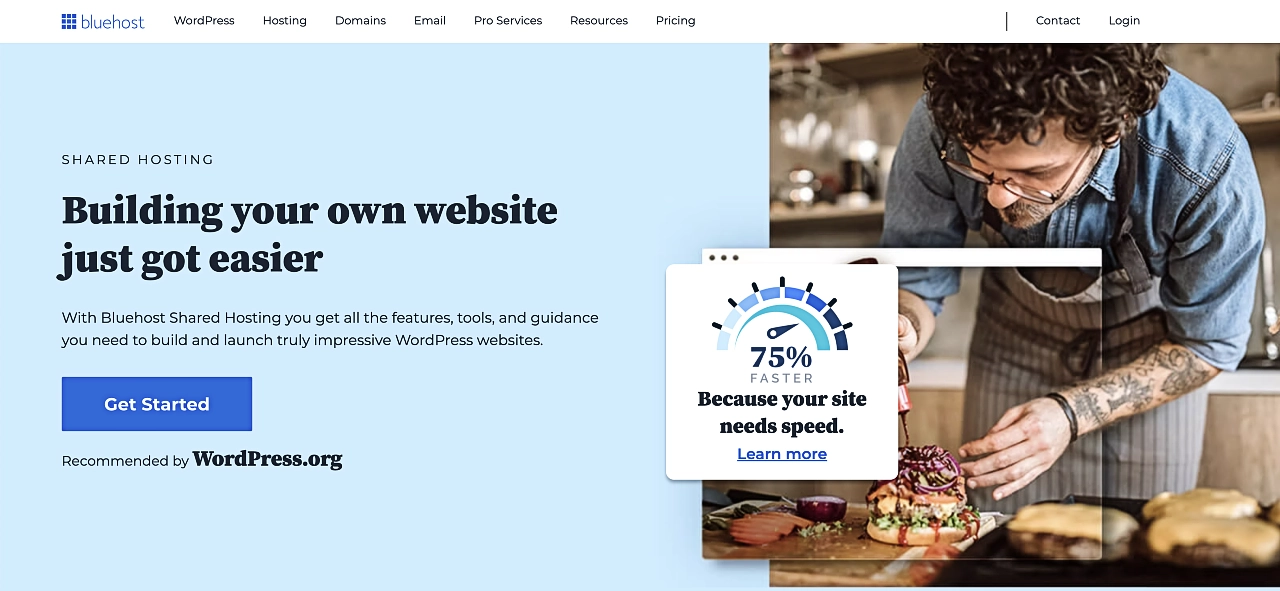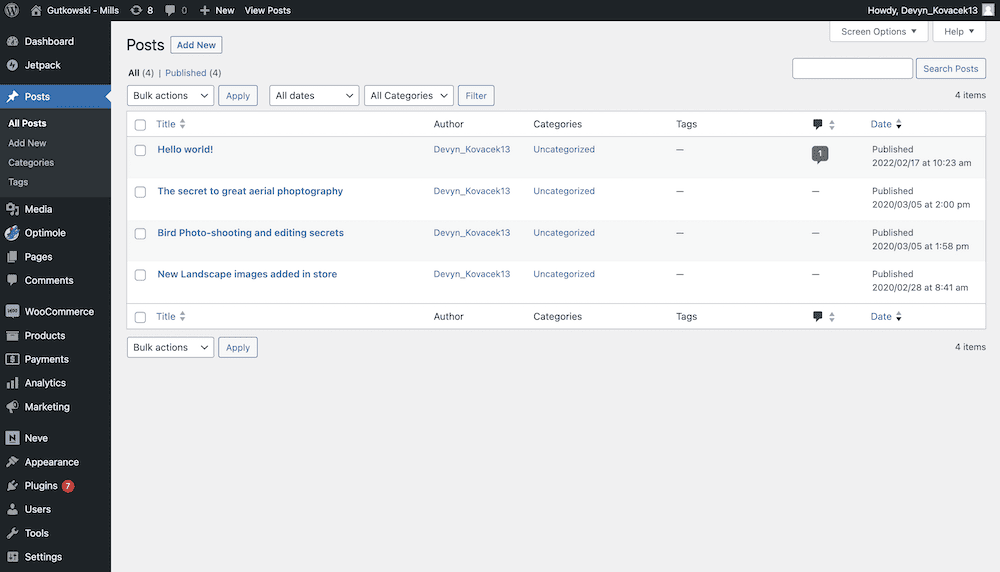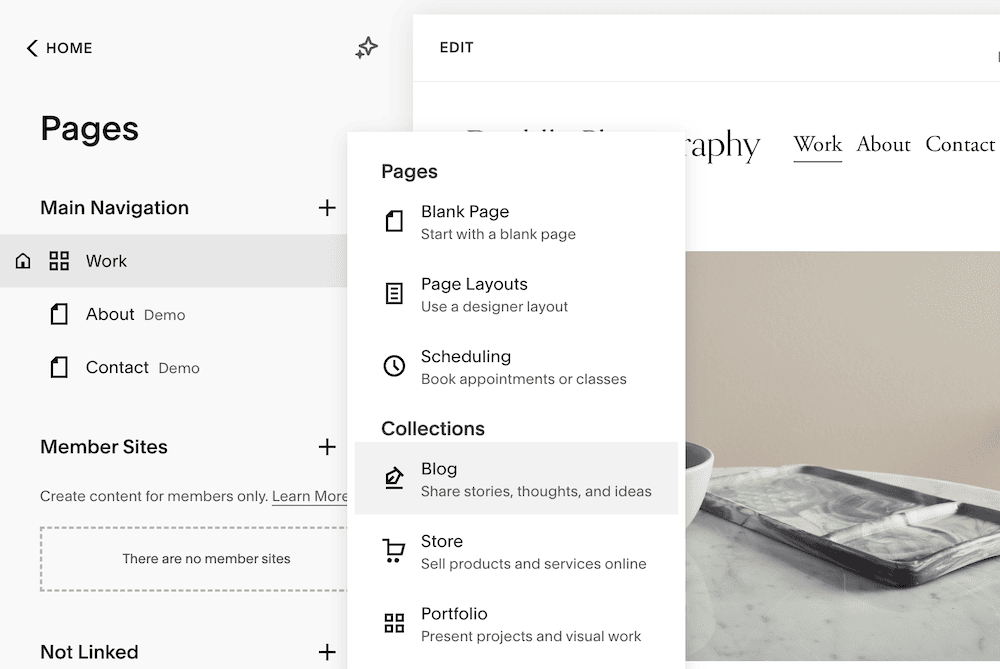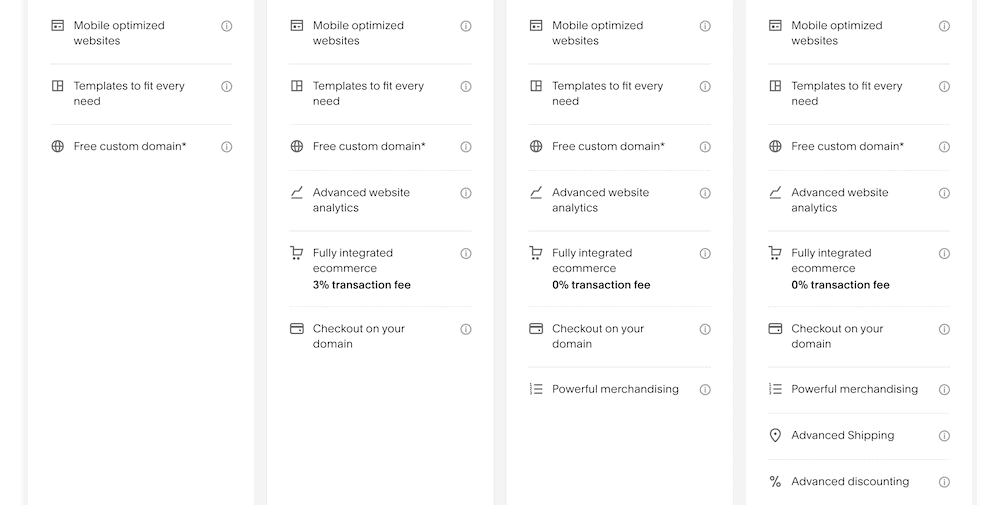Bluehost vs Squarespace is one comparison you’ll want to make when choosing ways to build your website. They each offer unique tools such as hosting, site design, ecommerce functionality, and more. Yet, they’re different enough that it’s impossible to choose a definite winner.
Instead, we’ll let you know what each platform offers in order to pick the right one for your needs. It’s not a spoiler to say that both can be perfect, depending on your requirements. 📌
Bluehost vs Squarespace: an overview of both apps
Let’s start with the simpler option (at least in explanatory terms). Squarespace is an all-in-one website builder platform that is the darling of YouTube video sponsorship. It’s popular, and it gives you the functionality you need ‘under one roof’ to set up, design, launch, and run your own website. Squarespace provides all of its website-building features for a monthly subscription fee. Similar solutions include Weebly, Wix, and even Shopify.

The idea behind Squarespace is to have no need for third-party apps, services, or tools – and to have access to all its features with a simple web browser. The experience centers on its drag-and-drop website builder, although it also offers content management, domain registration, and marketing tools.
👉 We have a full review of Squarespace elsewhere on the blog that you’ll want to read alongside this post.
Bluehost, on the other hand, is not a website-building platform. Instead, it’s a web hosting provider that offers website-building tools as extra features. The distinction seems unimportant, but it’s not.
Bluehost focuses on selling server space for websites or applications that use WordPress or other content management systems. This gives it greater flexibility to offer the right type of server architecture you’ll need. As such, Bluehost competes against the likes of SiteGround, A2 Hosting, GoDaddy, Hostinger, and many others.

We’ve previously covered the distinction between Bluehost and WordPress in another post on the blog. In fact, we mention Bluehost a lot, because we think it’s a great way for many types of users to host a site using WordPress.
Throughout the rest of the article, we’ll explore what’s similar and different about Bluehost vs Squarespace, then give you our verdict. 👨⚖️
Bluehost vs Squarespace: the similarities
Given that we’re comparing both platforms, you’ll expect there to be some similar elements. For us, there are four overlapping areas in our Bluehost vs Squarespace comparison:
Let’s first look at hosting, then move onto the other areas.
1. Site hosting 🌐
This is straightforward: both Bluehost and Squarespace offer web hosting at their core. We’ll look at server architecture later, because there are clear differences between the two. However, each platform will let you set up a site and host it on a server.
Of course, the way both providers go about site hosting is different. Bluehost lets you choose from many server types, locations, and setups – again, it’s something we’ll look at in greater detail later. Squarespace hosting functions in the background. You don’t get to customize anything about your Squarespace hosting, but that’s the point – it’s supposed to just work. This way, beginners can host a site without having to mess with any technical settings.
2. Hosting and tools for ecommerce 🛒
Both Bluehost and Squarespace let you set up a full-featured ecommerce site, but there are deep differences in how you make a store on each platform. For instance, Squarespace has built-in ecommerce features with the ability to add additional features using third-party apps.

In contrast, Bluehost offers WooCommerce (ecommerce) hosting as part of its WordPress offering. This means using the WooCommerce plugin within WordPress to build your store. It gives you similar features and functionality as an online store from Squarespace, but you must piece together the ecommerce tools when working with Bluehost. Squarespace just gives them all to you, ready to go.
3. Site-building tools 🏗️
Only a few years ago, this element would have been a key difference between Bluehost vs Squarespace.
However, the gap has closed since Bluehost now offers multiple site-building tools as a feature of its hosting plans. For instance, Bluehost has a one-click installation for WordPress, which relies on an easy-to-use block editor to let you create a website. For this particular solution, it’s WordPress that helps you build a site, rather than Bluehost itself. In addition, Bluehost also provides its own website builder – Wondersuite – which uses drag-and-drop functionality for site building.

The common integration of WordPress and Bluehost allows you to use dedicated themes to choose a general look for your site and a page builder within WordPress to design your site with blocks.

Squarespace has its own site builder – a full-screen designer that’s easy to use:

You’ll choose a template for your site and tweak it to perfection (although you can start from scratch, too).

Squarespace provides access to a full library of blocks and sections to help you build your site.
Squarespace and WordPress have similar site-building features, but Bluehost requires several moving pieces to establish a visual building experience (you must install WordPress, then use a page builder like Gutenberg or Elementor). Squarespace’s site-building tools are ready to use from the moment you start an account with Squarespace.
4. Domain registration 🧑💻
Another similarity between Bluehost vs Squarespace that may not be the same for other web hosts is domain registration. This is where you can claim a domain name for your site without using a third-party service.
Bluehost provides this and is one of the more prominent ‘domain registrars’ you can find.

Up until recently, Squarespace didn’t have domain registration available [1]. However, because it acquired the Google Domains service [2], you can buy your chosen domain name during the signup and setup process.

Both solutions have a great way to get a domain name for your site through a familiar interface, which helps when you need to choose a platform.
Bluehost vs Squarespace: the differences
Of course, there are significant differences between Bluehost and Squarespace. After all, one is primarily a hosting company and the other a website builder. As such, we’ll look at the following areas:
Managing content is arguably the most striking difference between Bluehost vs Squarespace, so let’s start there.
1. Content management functionality 💡
By itself, Bluehost lacks content management functionality. That’s where the WordPress integration come into play. WordPress is a Content Management System (CMS). This means it gives you powerful ways to create, organize, and manage the content on your site, without code or complicated settings. The WordPress dashboard shows you how focused the platform is on this aspect:

You’re able to set up taxonomies (such as categories and tags), use pre-built patterns to quickly design your pages, create author user roles, and much more. None of this content management is handled in Bluehost, but Bluehost stores all the WordPress site files.
Squarespace is more of a site designing tool with blogging functionality added in. It can work with taxonomies too, but you have to set up a blog (and its components) manually through the Pages screen:

There is less flexibility here, and it certainly lacks the level of customization that WordPress offers. Having said that, Squarespace content management comes built into the system, without any need to install extra platforms or plugins.
In contrast, Bluehost is ‘naked’. You must install a content management system of some sort to it, which in most cases means installing WordPress. This generates multiple dashboards to your workflow, which can feel intimidating to some new users. Although to Bluehost’s credit, the WonderSuite option comes with the WonderStart onboarding tool, and that does significantly simplify the setup process.
So, in summary, Bluehost’s content management is non-existent. However, when paired with WordPress, it’s better than Squarespace, though slightly more complicated to manage.
2. Site design capabilities 🎨
Squarespace offers a multitude of templates and design customizations through its website builder. All the design functionality you need is within the platform, so there’s no requirement to find integrations.

In contrast, Bluehost offers almost no site design options. This is understandable, given that it’s a web host. Instead, you’ll use WordPress or Wondersuite (or one of Bluehost’s many other site-building integrations) to design your site.
However, even with WordPress, there will probably be a period where you’ll need to decide on what capabilities you require and how you’ll add them. To match the level of Squarespace’s default, it will need a third-party solution.
3. Flexibility 🤸♂️
While Squarespace delivers on its promise to give you all the tools, you need to build your site, this isn’t always ideal for flexibility. For instance, you might enjoy the website builder, but dislike the content management functionality. Unless there is a third-party app replacement, you have to make do with what you have.

For Bluehost, you have greater flexibility – even with the WonderSuite site builder. The WordPress architecture means you can swap out site editors, add functionality using plugins, and try out a greater selection of free and premium themes.
Of course, Bluehost itself doesn’t have much flexibility, as it’s only the web host. But there are options on Bluehost that give you full control over your domains, emails, and site files. This is particularly useful if you want to change platforms. With Bluehost, it’s easy to download site files and migrate them to another host. Squarespace, unfortunately, prevents complete access to your site files, making it nearly impossible to switch to another site-building platform (without losing much of your original design).
4. Hosting architecture 📐
Hosting architecture is arguably one of the clearest differences between Bluehost vs Squarespace. To start with the latter, you have one architecture type. It’s an all-in-one, end-to-end bundle of server, hosting access, and site-building functionality. Pricing plans from Squarespace lack any server or hosting customization options.

Bluehost is a web host, so it lets you customize your server setup. For instance, you can opt for shared hosting, managed WordPress hosting, Virtual Private Servers (VPS), and further customizations for each.

Bluehost also gives you control over elements like web storage maximums, bandwidth, and the security of the server itself.
Bluehost vs Squarespace: which one you should choose in 2023 🔎
It’s good that you have a choice in how you publish your website, but that can be overwhelming – especially if you don’t have the time to research every possible option. Our guide compares Bluehost vs Squarespace to help you quickly narrow down the search.
🚀 If you’re still on the fence, here’s a quick summary:
- 👉 Bluehost. This is a web hosting provider that lets you set up WordPress websites and other platforms. It offers flexibility (although this can be more complex), extendability through themes and plugins, and immense power to create almost any site you wish. Of course, it also leverages the excellent design and content management functionality of WordPress. By itself, Bluehost can’t help you build a complete website. It’s a solution that provides more control but at the expense of having to piece together extra design elements.
- 👉 Squarespace. This all-in-one website builder (after signing up for a subscription) provides almost everything you need to design, launch, and run a website. It’s more straightforward to launch a site, but arguably offers fewer ways to customize it. The experience is still fantastic, and gives beginners a way to build a site without having to connect hosting, WordPress, and several other elements.
Which platform do you like after reading our Bluehost vs Squarespace comparison, and why? Let us know in the comments section below!